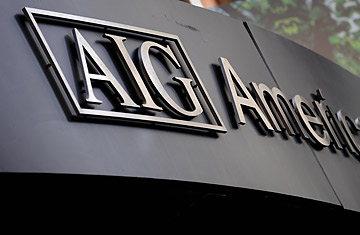
Office of the Special Inspector General for the Troubled Asset Relief Program
"Initial Report to Congress"
SIGTARP: Neil M. Barofsky
189 pages
February 6, 2009
The Gist:
In the past two months, the federal government has handed out hundreds of billions of dollars to troubled financial institutions. So where did the money go? And what assurances does the American public have that the money's not being wasted? In his first report to Congress, a Special Inspector General charged with overseeing the so-called Troubled Assets Relief Program (TARP) tries to answer these questions. (See pictures of the Top 10 scared traders.)
Highlight Reel:
1. On groundwork laid by the Special Inspector General in anticipation of fraud: "[The Special Inspector General for TARP] is already working closely with FBI's Washington Field Office on joint projects and has met with representatives of the New York Field Office as well ... [The Special Inspector General for TARP] and the New York State Attorney General's Office are coordinating efforts with respect to TARP recipients' compliance with executive compensation restrictions."
2. On the black hole the government created when it did not initially establish reporting and monitoring systems: "TARP agreements generally do not require recipients to report or to track internally the use of TARP funds ... If the American taxpayer is to be expected to fund this extraordinary effort to stabilize the financial system, it is not unreasonable that the public and its representatives in Congress have some understanding as to how those funds have been used by the recipients."
3. Some of the definitions provided throughout the report, in sidebars and in a glossary to make is easier for laypeople to read: "Clawback: Recovery by the company of bonuses or incentive compensation paid to a senior executive ... Golden Parachute: Compensation to (or for the benefit of) a Senior Executive Officer made upon severance from employment that exceeds specified thresholds. Under EESA [The Emergency Economic Stabilization Act], such compensation is limited to three times the executive's annual base salary ... Haircut: Difference in the value of the collateral and the value of the loan (the loan value is less than the collateral value)."
4. On funds disbursed to banks to motivate them to extend credit to borrowers and communities: "There was no requirement for recipients to monitor their use of the funds, and it has been widely reported that banks have been "hoarding" the money, acquiring other banks, and paying off debt. Treasury has recently begun to establish periodic reporting guidelines for certain TARP recipients."
5. On how much the government will spend administering TARP (it had already spent nearly $4 million in administrative costs by the end of 2008): "...if Treasury maintains possession of all or most of the purchased assets, the administrative costs of operating the program could amount to more than $1 billion per year." (Contracts to companies outside the government include: $20 million to Bank of America to administer the portfolio of assets the Treasury Department may buy; $395 to the Washington Post to list "vacancy announcements"; $75,850 to Colonial Parking for the lease of parking spots.)
6. On a particularly troubling TARP program called Term Asset-Backed Loan Facility that lets companies borrow money using asset-backed securities as collateral: "Treasury should consider requiring that some baseline fraud prevention standards be imposed (such as minimum underwriting standards or some other combination of provisions that will minimize the risk of fraud)."
The Lowdown:
The Treasury Department, in its panic over the collapse of banks on Wall Street, rushed to get TARP out the door — no doubt about it. The government didn't require banks to keep track of the money, report how they were spending it or loan it out to free up credit markets. But it's not all bad news. The fact that the special inspector general's office exists is an important sign that the Treasury Department realized the limits of its abilities. Recent and future TARP outlays have a whole new set of stringent reporting requirements. The inspector general's report doesn't give super-high marks to the program so far, but it does provide a blueprint of how it should be run going forward. Still, as the report indicates, "the long term success of the program is not assured."
The Verdict: Skim
